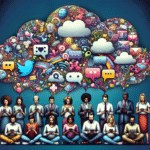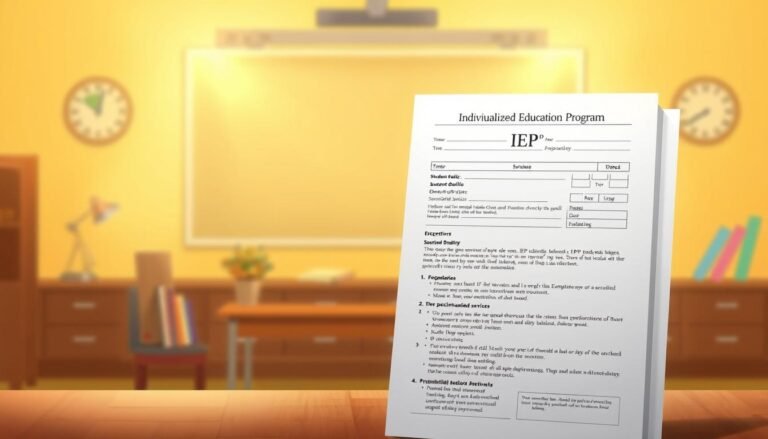
The Ultimate Guide to The Science of Reading: Evidence-Based Techniques for Teaching Dyslexia
Introduction
In a world increasingly driven by literacy, the ability to read is foundational for educational success and personal growth. Yet, many learners struggle to wield this vital skill, particularly those diagnosed with dyslexia. Dyslexia, a common learning difference affecting approximately 15-20% of the population, can present significant challenges. With effective teaching strategies grounded in The Science of Reading: Evidence-Based Techniques for Teaching Dyslexia, educators can transform the learning experience for individuals affected by dyslexia, enabling them to thrive both academically and personally.
In this article, we’ll delve into the intricacies of the science behind reading instruction and how evidence-based practices can make a remarkable difference for students with dyslexia. Prepare to unlock the key to effective literacy education!
Understanding Dyslexia and its Challenges
What is Dyslexia?
Dyslexia is a neurological condition that affects a person’s ability to read and process language. It is often characterized by difficulties in phonemic awareness, decoding, spelling, and even handwriting. Misunderstanding dyslexia can lead to mislabeling students as simply "lazy" or "not trying hard enough," perpetuating frustration for both students and educators.
The Impact of Dyslexia
The impact of dyslexia on a child’s life can be profound. It often influences academic performance, self-esteem, and overall social interactions. Per the International Dyslexia Association, children with dyslexia struggle disproportionately with reading fluency and comprehension, leading to increased dropout rates and diminished career opportunities later in life.
By understanding the nuances of dyslexia, educators and parents can create a more supportive environment. The Science of Reading: Evidence-Based Techniques for Teaching Dyslexia aims to empower those involved with effective, scientifically-backed strategies to support learners with dyslexia.
The Principles of The Science of Reading
What is The Science of Reading?
The Science of Reading embodies a vast body of research emphasizing effective literacy instruction. It synthesizes knowledge from fields such as cognitive psychology, linguistics, and neuroscience to provide a holistic approach to teaching reading. Central to this science is the understanding of how the brain processes language and the specific skills that contribute to reading proficiency.
Key Components
The Science of Reading encompasses various key elements that are crucial for developing reading skills, particularly in students with dyslexia:
- Phonemic Awareness: Recognizing and manipulating individual sounds in spoken words.
- Phonics: Understanding the relationship between letters and sounds.
- Fluency: The ability to read accurately, quickly, and with expression.
- Vocabulary: The breadth of words a student understands and can use.
- Reading Comprehension: The capability to understand and interpret text.
Recognizing the interconnectedness of these components is vital. Dyslexic learners may struggle in one or more areas, necessitating a multi-faceted, evidence-based approach.
Evidence-Based Techniques for Teaching Dyslexia
Structured Literacy
Structured literacy is a comprehensive approach aligned with The Science of Reading. It includes explicit and systematic instruction focusing on the fundamental components of literacy. Key features include:
- Explicit instruction: Teaching language concepts directly.
- Systematic progression: Introducing concepts in a logical, sequential manner.
Case Study: A school district in Texas adopted a structured literacy program aimed at improving literacy outcomes for struggling readers. Following the implementation of explicit phonics instruction and regular assessments, the percentage of students demonstrating reading proficiency increased by 35%.
Multisensory Learning
Multisensory learning integrates visual, auditory, and kinesthetic modalities. This approach is particularly beneficial for students with dyslexia, as it allows them to engage multiple senses, making learning more impactful. Techniques include:
- Using manipulatives for phonics practice.
- Engaging in movement-based activities associated with letter sounds.
Case Study: An elementary school in Florida utilized a multisensory approach for struggling readers, incorporating guided drawing exercises alongside traditional phonics instruction. One year’s implementation results showed a remarkable improvement in reading fluency scores, demonstrating the efficacy of this holistic approach.
Culturally Responsive Teaching
Dyslexia does not exist in a vacuum; cultural and societal factors play a role in the literacy experience. Culturally responsive teaching recognizes students’ diverse backgrounds and offers personalized, relevant connections to their literacy instruction.
Case Study: An urban middle school implemented culturally responsive literacy practices by including texts that reflect the demographics and interests of their student body. The initiative resulted in a 50% increase in engagement and a corresponding uptick in literacy performance among students with dyslexia.
Resources and Tools
Books and Programs
- "Overcoming Dyslexia" by Sally Shaywitz: A comprehensive resource for understanding dyslexia and effective interventions.
- Wilson Reading System: A structured literacy program specifically designed for individuals with dyslexia.
Online Platforms and Applications
- Lexia Learning: Offers personalized reading intervention systems for students.
- Reading Rockets: Provides numerous resources for educators and parents, including lesson plans and strategies for teaching children with dyslexia.
Evaluating Progress and Outcomes
Assessments
Regular assessments are necessary to monitor progress and adapt teaching strategies accordingly. A combination of formal and informal assessments can provide valuable insights:
- Curriculum-Based Measurements (CBMs): Consistent fluency checks can help tailor instruction to individual student needs.
- Classroom Observations: Informal assessments through observation provide a broad view of students’ engagement and understanding.
Progress Monitoring Tools
Tools like DIBELS (Dynamic Indicators of Basic Early Literacy Skills) help educators track students’ reading development, ensuring interventions remain effective.
Chart: Progress Monitoring Toolkit
| Assessment | Purpose | Frequency |
|---|---|---|
| DIBELS | Measure fluency and early literacy skills | Bi-weekly |
| Running Records | Assess comprehension and decoding abilities | Monthly |
| CBM Fluency | Determine reading fluency | Weekly |
Analyzing Data
Utilizing data effectively can inform instruction and improve outcomes. Regular review meetings can serve as a platform to discuss findings, share strategies, and enhance collaboration among educators.
Overcoming Barriers to Implementation
Common Challenges
- Resistance to Change: Educators may feel apprehensive about shifting away from traditional methods.
- Limited Training: Teachers often lack training in the specific strategies that effectively support dyslexic students.
Strategies for Implementation
Professional Development: Ongoing training in The Science of Reading: Evidence-Based Techniques for Teaching Dyslexia is vital for effective instruction.
- Collaborative Planning: Forming networks among teachers can foster idea-sharing, resource utilization, and mutual support.
Conclusion
In summary, addressing dyslexia effectively requires an informed and multifaceted approach encapsulated in The Science of Reading: Evidence-Based Techniques for Teaching Dyslexia. By equipping educators with the right tools and strategies, we create an environment where all learners, particularly those with dyslexia, can thrive.
Let’s transform our classrooms into inclusive spaces where every student’s reading potential can be unlocked and celebrated. Together, we can pave the way for brighter futures through the power of literacy!
FAQs
1. What is the Science of Reading, and why is it important for teaching dyslexia?
The Science of Reading refers to the research-based understanding of how reading works and the most effective methods for teaching it. This knowledge is vital for supporting students with dyslexia because it provides evidence-based strategies that directly address their unique needs.
2. How can parents support their dyslexic children at home?
Parents can create a supportive reading environment by engaging in regular reading activities, using multisensory resources, and ensuring access to books that interest their child. Encouragement and patience are key.
3. What structured literacy programs are effective for dyslexic students?
Programs such as the Wilson Reading System, Orton-Gillingham, or Barton Reading and Spelling System have proven effective for teaching students with dyslexia, as they employ systematic, explicit phonics instructions.
4. How can teachers assess students with dyslexia effectively?
Teachers can employ a combination of formal and informal assessments, such as Curriculum-Based Measurements (CBMs) and running records, to monitor reading progress and inform instruction.
5. Are there specific accommodations for dyslexic students in the classroom?
Yes, common accommodations include extra time for assignments, text-to-speech software, graphic organizers, and access to audiobooks to support their learning.
6. How does dyslexia influence a student’s self-esteem?
Students with dyslexia often face challenges that their peers do not, including frustration with reading tasks. Without proper support, this can lead to diminished self-esteem. Encouragement, successful interventions, and celebrating small victories can help bolster their confidence.
By implementing The Science of Reading: Evidence-Based Techniques for Teaching Dyslexia, we can reshape the literacy landscape for students with dyslexia and ensure every child’s right to reading success.
















